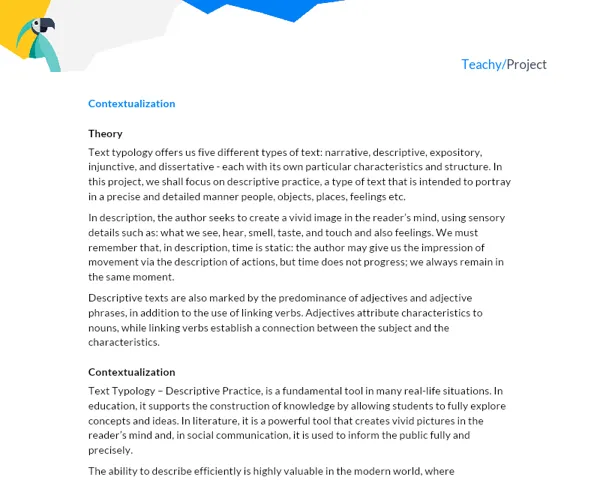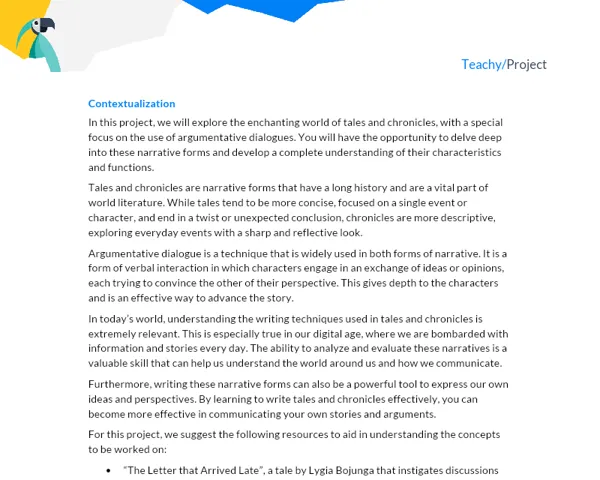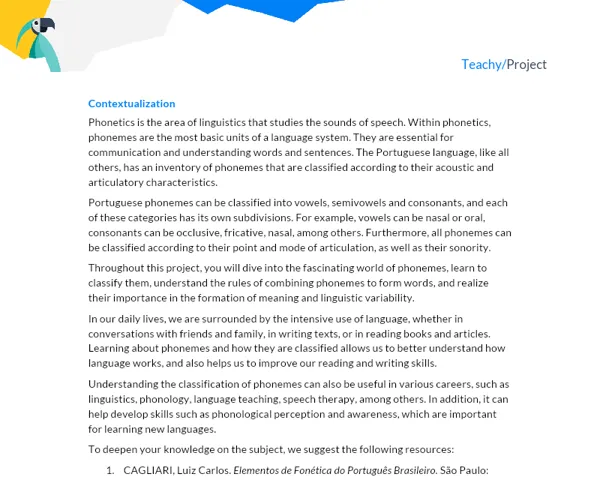Contextualization
Understanding how to properly construct a sentence is one of the fundamental principles when it comes to effective communication. Coordinating conjunctions are the backbone of building sentences that have more than one clause, called compound sentences. These conjunctions allow us to combine clauses in a way that expresses ideas more precisely and sophisticatedly.
Coordinating conjunctions are words that join two clauses or similar terms in the same sentence, accounting for a variety of semantic relationships, such as opposition, conclusion, alternative, and others. They are extremely important in textual organization and, therefore, are widely used in the elaboration of written texts, whether in literature, journalistic texts, or school textual productions.
These conjunctions are divided into different categories, expressing different types of relationships between the clauses they connect: additive, adversative, alternative, conclusive, and explicative. By learning to identify these different categories, we can untangle the complex structure of sentences and improve our own use of the Portuguese language.
In the real world, knowing how to use coordinating conjunctions correctly is essential to create clear and effective communication. In academic environments, for example, conjunctions are often used to elaborate complex arguments and organize ideas logically and fluently. In everyday life, conjunctions are also important because they help us express our ideas more precisely and better understand the thoughts and feelings of others.
To delve deeper into the subject and have a broader view of coordinating conjunctions and compound sentences by coordination, I suggest the following resources:
- Book: "Gramática da Língua Portuguesa" by Pasquale Cipro Neto and Ulisses Infante. It is a comprehensive book that addresses grammar in a detailed and didactic way.
- Video: Coordinating Conjunctions - Professor Noslen. Professor Noslen conveys the concepts in a very accessible and fun way.
- Study Portal: Estudonauta - Coordinating Conjunctions. This site has a huge variety of content on grammar and is great for consultation and exercises.
Practical Activity: Coordinating Conjunctions in Action!
Objective
Apply and illustrate the use of coordinating conjunctions through the creation of a theatrical script.
Project Description
This project involves creating a theater script with 5 to 10 scenes using coordinating conjunctions. Each scene of the script should be based on a coordinating conjunction (additive, adversative, alternative, conclusive, explicative), demonstrating its use and function.
Necessary Materials
- Computer or paper and pen to write the script.
- Books or internet resources for research on the topic.
Activity Step-by-Step
-
Group Formation: Divide into groups of 3 to 5 students.
-
Study the Topic: Research "Coordinating Conjunctions and Compound Sentences by Coordination".
-
Script Planning: After understanding the topic, start organizing your ideas for the script. You will have to think of a situation or story that allows the use of coordinating conjunctions. Remember that each scene should represent a coordinating conjunction.
-
Write the Script: Start writing the script for the scenes. Make sure each scene clearly illustrates the use and function of the coordinating conjunction it represents.
-
Script Review: Read the script out loud and check if it is clear and meets the task requirements. Make modifications if necessary.
-
Prepare the Report: Write a report on the learning and script creation process and justify the choices made. The report should include the following topics: Introduction, Development, Conclusion, and Bibliography. In "Development", describe the process of creating the scenes, the challenges faced and how they were resolved, the decisions made, and the results obtained. Include excerpts from the script to illustrate your point. In "Conclusion", discuss the lessons learned and how the project helped understand coordinating conjunctions.
Project Delivery
The project will be delivered in two parts: the theatrical script and the report.
-
Theatrical Script: The script should be presented clearly and organized, demonstrating the use and function of coordinating conjunctions.
-
Report: The report should follow the proposed structure: introduction (with the importance of the topic and motivation for the project), development (detailed description of the script construction process, challenges, results), and conclusion (final reflections on the project and lessons learned). Do not forget the bibliography: all resources used to learn about the topic and to build the script must be cited.
This project will be an excellent opportunity to learn and apply coordinating conjunctions in a playful and interactive way.



